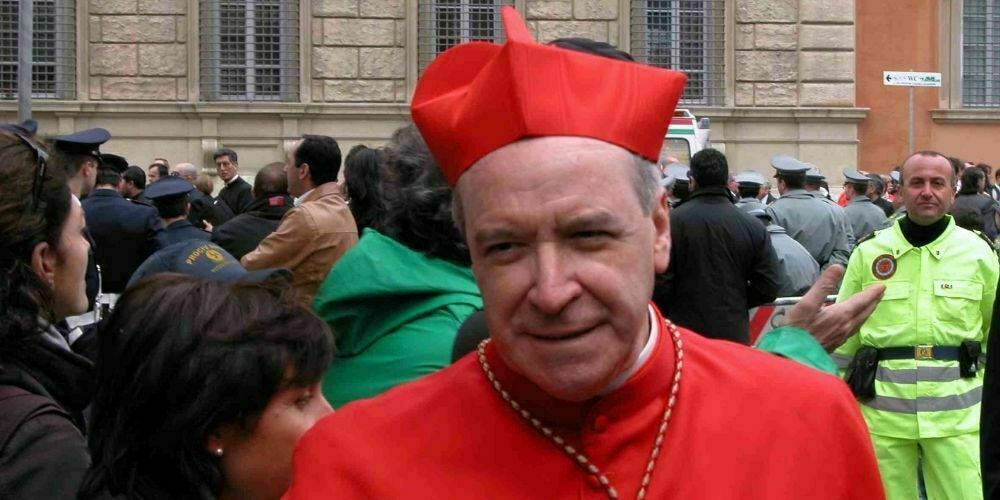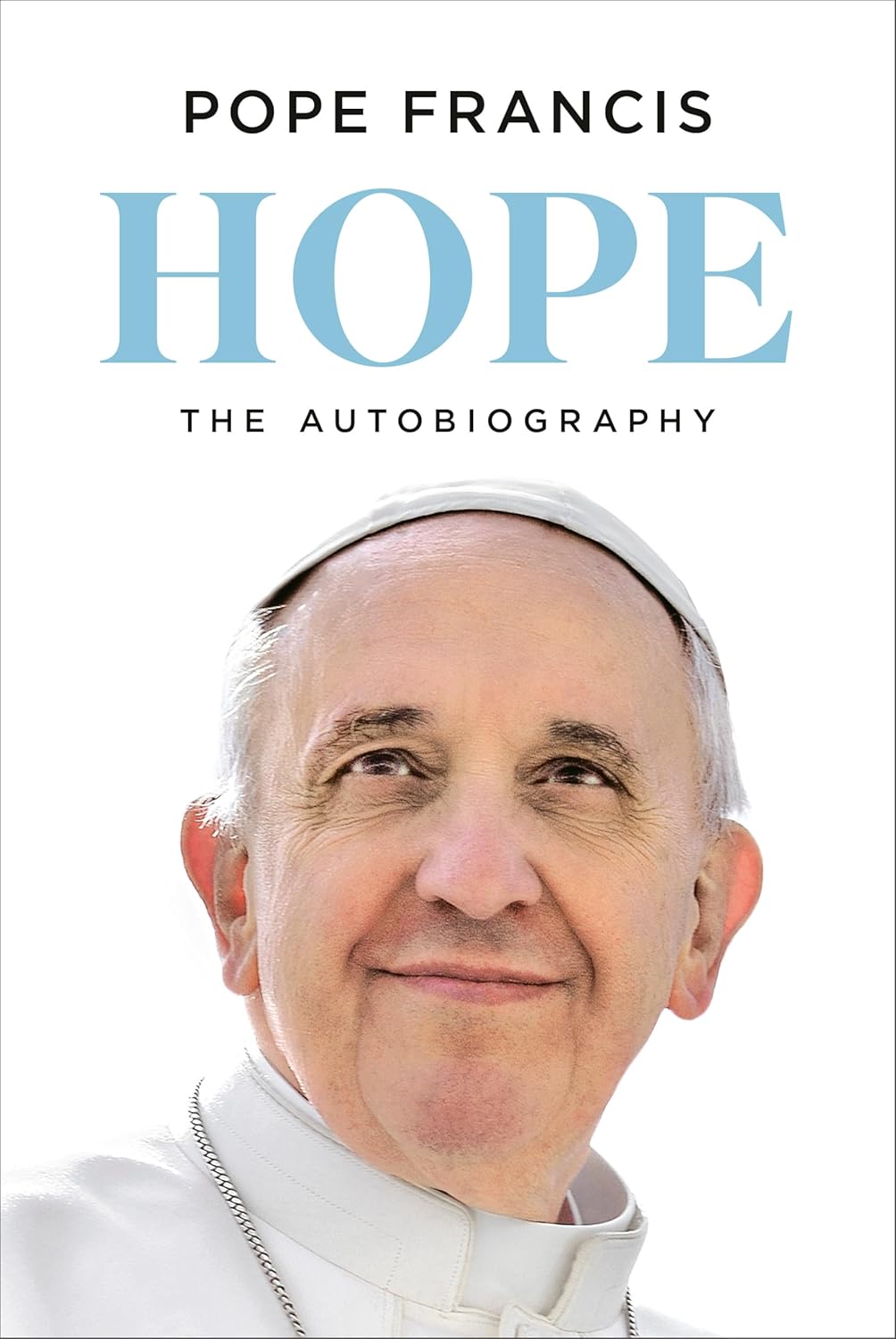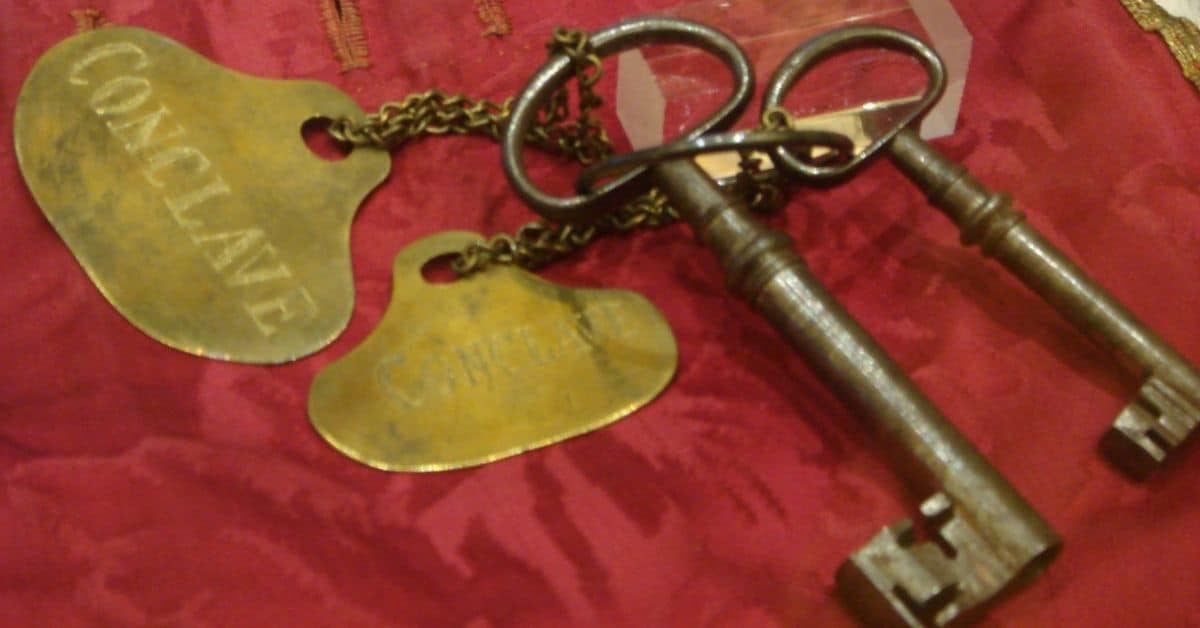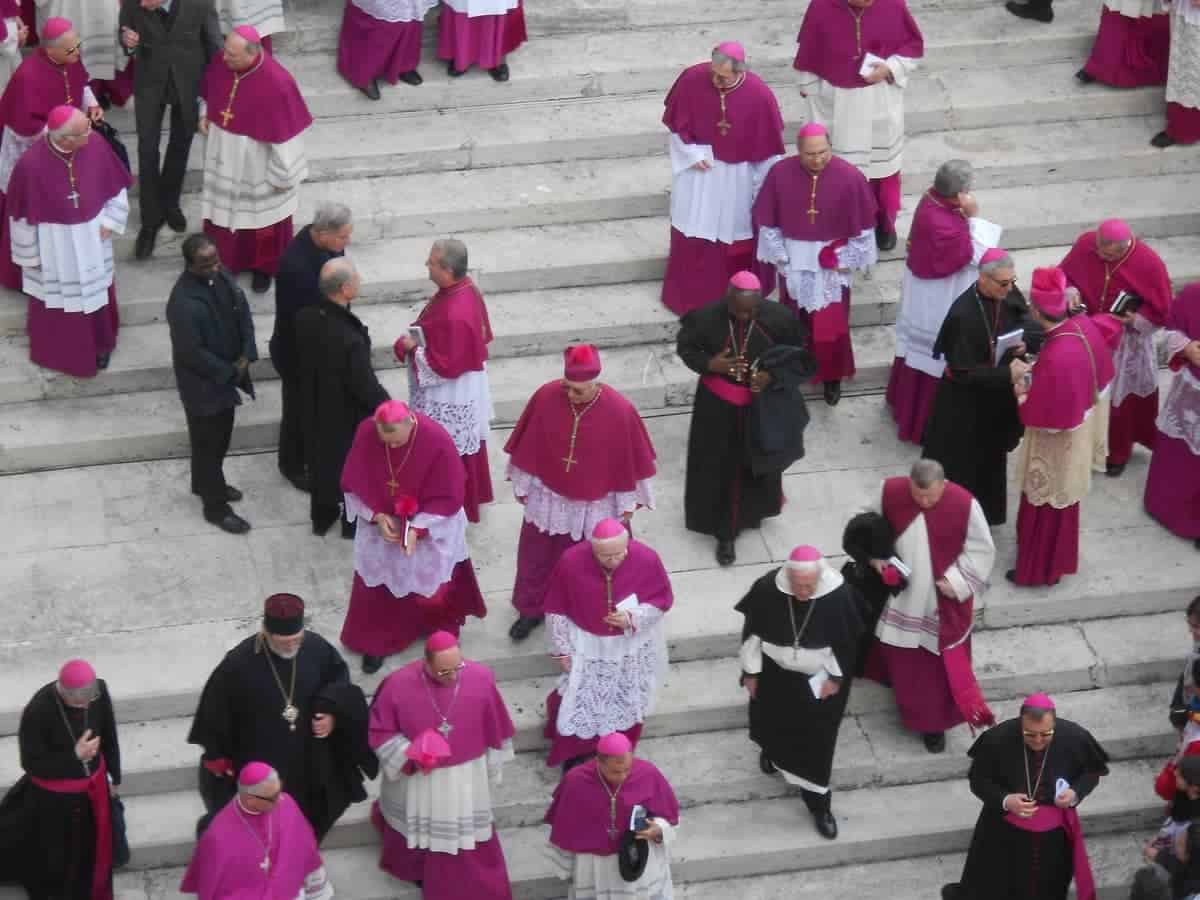Information about the Pope, the Vatican and the Roman Catholic Church is almost endless. In this article we will cover the most important issues concerning the Pope and the Vatican in a comprehensible way.
To begin, let me immediately explain very briefly the first concepts: the Pope is the head of the Roman Catholic Church, the largest Christian denomination in the world. The central administration and the seat of the pope are in the Vatican, the smallest state on earth, which is located in Rome, Italy.
Also read: Who will be the next pope? We have listed the eight top contenders at this time. Among them is a black cardinal and an Asian candidate. Read more in this article.
The Pope: head of the Catholic Church
The pope is head of the Roman Catholic Church, the world’s largest Christian denomination. On paper, one billion 389 million Catholics are registered (2023), representing 17.7 percent of the world’s population.

But the pope is more than only ‘head’. He actually has seven titles, including Successor of Peter and Vicar of Jesus Christ, a title that came into use in the fifth century and refers to the pope’s divine task. The pope also is the Primate of Italy and the Sovereign of the Vatican City. The current pope has renounced the seven titles on paper. But a subsequent pope can use them again. The Pope is most of all bischop of Rome, a title he can not renounce.
Hope: The Autobiography
By Pope Francis
New York Times bestseller
First autobiography by a Pope
A vivid memory…
Get offer at Amazon.comBeing pope means that, “by virtue of his office, [he] possesses the supreme, complete, immediate and universal ordinary power in the Church, which he is free to exercise at any time”, according to the Church Code of Law (canon 331). This means that his word is law.

By the way, ‘head’ is the appropriate term (not chief, CEO or boss or anything like that). The official church of the bishop of Rome (=Pope) is the St. John of Lateran. And that church is called the “Omnium Urbis et Orbis Ecclesiarum Mater et Caput“, or the head (caput) and mother of all the churches in Rome and the whole world.
What does the word Pope mean?
Many Catholics address the Pope as ‘Holy Father’, as the spiritual father of all Roman Catholics. The form of address is derived from the word pope, which comes from the Greek pàpas and means father. Also in Latin, papa is the word for pope. In the Catholic Church, the title was reserved for bishops until, but from the the fifth century it referred only to the bishop of Rome. “Papa urbis romae” (Pope of the city of Rome) is written in a Latin document from that time.
The Pope is head of the Roman Catholic Church, with emphasis on Roman, which refers to the connection of all bishops with Rome. Francis is the 265th successor of Peter and therefor the 266th Pope.
How many popes have there been?
Francis is pope number 265 since Peter, who is considered the first pope. One pope (Benedict IX) took office three times. So in total, there have officially been 264 popes in history. 148 of them are buried in the St. Peter’s. The others are entombed elsewhere, mostly at other places in Rome, some abroad (like in France).
What does the Pope do?
The pope does pretty much what the U.S. president does: manage the ongoing business and give direction to put it briefly. But besides a political and administrative role, the pope also has a religious role. And unlike the U.S. president: the pope (the so called ‘Holy Father’) is supposed to be ‘holy’,” that is, have a very high moral standard. However, there is no job description for the pope. Nevertheless, we can list among his the main functions:

- Governor of the Church (head of a religious organization with about a million ’employees’ (priests) – every week alone the Pope has to appoint a new bishop)
- The most influential religious world leader (because of the top-down organization of the RC Church, the Pope can talk for 1.3 billion people. Other Christian denominations and other religions do not have such focal point)
- Political and diplomatic leader (the Vatican has relations with 183 countries and its diplomatic service is the oldest in the world)
There is, of course, much more to be said on this subject.

Why does the pope live in Italy?
That the Vatican would develop into the center of the Roman Catholic Church is remarkable. Why, for example, did Jerusalem (where Jesus died) not become the city of Popes?
Rome is the capital of the Catholic Church because the apostle Peter died there. His place of death was significant because of Jesus’ vow to Simon whom he called Peter, a name that means ‘rock’ in Aramaic, the language Jesus spoke. The Gospel of Matthew (16:18-19) says that shortly before his death Christ said to Peter, “You are Peter, the rock on which I will build my church.”
Christ promised to give him “the keys of the kingdom of heaven.” And the evangelist John wrote (21:15-17) that Jesus asked three times if Peter loved him. Peter affirmed his love for Christ three times. “Shepherd my sheep,” Jesus then instructed him. By sheep and flock is meant the Christian community of faith.
How to become a pope?
Any (Roman Catholic) baptized and unmarried man can be elected pope, sorry female readers. But it helps quite a bit if you are a cardinal. Cardinals are the highest tier in the Church (it is however not an ordination, like priest and bishop), especially since they have the sole right to elect the pope. That right has been reserved for them since the year 1059.
The last Pope who was not a cardinal when he was elected was Urban VI in 1078. The last Pope who did not even have ordination, let alone be a cardinal, was Leo VIII in 963. However, he was quickly ordained a bishop before donning the papal white. Candidates must be under 80 years of age.

Who is the current Pope?
In order not to miss the mark and at the same time to be brief, here is a list of the most important facts (and my own insights) on the current pope:
- Papal name: Francis
- Secular name: Jorge Mario Bergoglio
- Date and place of birth: December 17, 1936 (88 years), Buenos Aires (Argentina)
- Pope since: March 13, 2013 (almost 12 years)
- The first American pope in 2000-year papal history
- The first Jesuit pope in history (the jesuits are a Catholic order)
- His papacy is centered on:
- Social feature: charity and concern for the weak
- Moral feature: less emphasis on issues like abortion, euthanasia, gay marriage
- Institutional feature: addressing corruption and bureaucracy in the Vatican
- Feature of his communication: straightforward, sometimes undiplomatic, charismatic
- Legacy: protocols to prevent child abuse, Vatican financial affairs nearly brought to international standards, risk of church split (with conservative part), church mission back to key objective (caritas)
Previous Popes
Who was the first Pope?
Peter is considered the first pope. He is one of the twelve disciples from the New Testament (part of the Bible). He is considered the first Pope because of the phrase from the Bible, as just indicated above: “You are Peter, the rock on which I will build my church.”

Who were the popes of the last 100+ years?
| Name | Country | Years | Duration (y) |
| Pius X | Italy | 1903-1914 | 11 |
| Benedict XV | Italy | 1914-1922 | 7 |
| Pius XI | Italy | 1922-1939 | 17 |
| Pius XII | Italy | 1939-1958 | 19 |
| John XXIII | Italy | 1958-1963 | 5 |
| John VI | Italy | 1963-1978 | 15 |
| John Paul I | Italy | 1978 | 0 |
| John Paul II | Poland | 1978-2005 | 26 |
| Benedict XVI | Germany | 2005-2013 | 8 |
| Francis | Argentina | 2013- | 12 |
Who was the youngest pope?
The youngest Pope was probably Benedict IX. He would have been twenty years old when he first became Pope. The youngest Pope also holds the record for becoming Pope multiple times (see beneath). Other sources have mentioned that this Benedict IX was twelve years old when he took office. Either way, a lot younger than The Young Pope (a 2019 Netflix series), where 44-year-old Jude Law wears the tiara.
And the oldest Pope in history? Surprise, surprise: as of September 4, 2020 Benedict XVI (born in 1927) is the oldest Pope in Church history, with the understanding that he is not a reigning Pope. Benedict was 85 years old when he resigned.
What is the longest serving pope?
Top 3 of longest-serving Popes:
- Pius IX (died in 1878): 31.7 years
- John Paul II (2005): 26.5 years
- Leo XIII (1903): 26.4 years
Has there been a black pope?
It is not entirely known whether there has been a pope with dark skin. What is certain, on the other hand, is that the earlier history of the papacy produced 3 popes originating from North Africa: Pope Victor (189-199), presumably of Berber origin; 2. Pope Miltiades (311-314), from an unspecified place in Africa; 3. Pope Gelasius (492-496) from present-day Algeria.

The term ‘black pope’ is also used to refer to the superior general of the Jesuits, because his election is also in theory for life (like that of the pope) and because the Jesuits wear the black cassock. But certainly also because the Jesuits were seen as the most powerful group inside the Roman Catholic Church. Centuries ago.
Who was the female pope?
Pope Joan is said to have been the only female pope to have reigned over the Church with the pontifical name of John VIII from 853 to 855. She is considered by historians as a myth or a medieval legend. The legend gained some degree of plausibility in the West because of intriguing elements contained in the story. She still appeals in today’s day and age, given books films that regularly appear about her.
Also read: about ‘Pope Joan’ in our article on pope movies
Twice the same pope
A Pope that becomes twice a Pope is in theory not possible. A Pope is Pope until his death. However, it is possible to step down. That is exactly what Benedict IX did in the year 1045. But a few months later, after the death of his successor, Benedict was elected pope again. After two months, he stepped down once more time. In 1047 he became pope for the third time. But even that time he stepped down (1048) before he died in 1055. Benedict IX is therefore the only Pope in history who made a come-back (or two).
Two popes in the Vatican
Currently (2022) the church features two Popes. One (Benedict XVI) has resigned, but he as no legal power whatsoever. His successor is the current pope, Francis. Both live in the Vatican. There is a nice movie on Netflix about both Popes in the Vatican, a very exceptional situation: The Two Popes.

In the distant past it sometimes happened that two, sometimes as many as three Popes at the same time contested each other’s position. These were called antipopes.
I could go on like this with papal questions and answers, but I’ll stop there, considering the length of the entire article. Who has more questions, feel free to write a comment below
The next Pope
Death of the Pope
Although we have Pope Francis’ best interests at heart, his pontificate will come to an end one day. The resignation or even death of the Pope is inevitable. But what happens when a pope dies or steps down from office?
Also read: In-depth article on what happens when the pope dies (or steps down)
After the pope dies, the period of sede vacante (or sedis vacatio, Latin for “the chair is empty”) begins, the span of time between the death of a pope and the election of the new pope. During this period, the Camerlengo, as a sort of interim manager, fulfills the most important role in terms of organizing the funeral and the conclave. His task is also highly ceremonial.

In 2005, no fewer than eight million people came to say goodbye to the Pope. For this, St. Peter’s remained open day and night. The funeral has taken place in St. Peter’s Square (formerly inside the basilica) since 1978. The funeral mass of John Paul II lasted almost three hours.
After the funeral, the novemdiales begin, That is the period of mourning asts nine days, as the word (‘novem’ = nine and ‘diales’ = day) indicates. After these nine days, the conclave normally begins.
How is the Pope chosen?
Also read: in depth about the election in conclave

- The election of the pope takes place in conclave (which meets 15-20 days after the death or abdication of the pope)
- The conclave is the meeting of cardinals (under 80 years of age) in the Sistine Chapel
- The Sistine Chapel is located in Vatican City, where the supreme authority of the Roman Catholic Church resides
- The conclave starts with a mass in the Sistine Chapel followed by a first round of voting
- The cardinals are lodging in the Domus Sanctae Marthae in the Vatican, that we call the ‘Conclave Hotel’
- From the second day onwards voting is held twice in the morning and twice in the afternoon (4 per day in total)
- After each second round of voting the ballot papers are burned
- In St. Peter’s Square, the smoke from the stove in the chapel indicates the score:
- Black smoke: there is no new pope elected yet
- White smoke: a candidate has received a 2/3 majority: he is the new pope
- After about an hour after the white smoke, the new pope is presented from a balcony of St. Peter’s with the words “Habemus papam”

Who wil be the next Pope?
Some 120 cardinals younger than 80 have the right to choose the next pope. The choice may fall on one of some 650 million Catholic baptized men. But in reality it comes down to one of their peers. The choice therefore narrows to about 120 men.

Also read: We have listed the eight top contenders at this time. Among them is a black cardinal and an Asian candidate. Read more in this article.
The Vatican aka Vatican City
What is Vatican City?
Vatican City has been around (only) since 1929. In that year the Lateran Treaties were signed by Italy and the supreme leadership of the Roman Catholic Church (also called Holy See). The treaties are so called because they were signed in the palace (Palace of the Lateran) of the Roman bishop (=Pope).
As for the denomination: Vatican City or Vatican is the same. Official name is: State of Vatican City
Where is Vatican City?
Vatican City is located in Rome, the capital of Italy. You can consider it an enclave, but one with total autonomy under international law as any other state in the world. The land is completely walled (except for St. Peter’s Square) and covers 108 acres. Population: 453 persons (source: Vatican City State).
The coordinates (pinned at St. Ann’s Gate, the official entrance) are: 41.9041666792201, 12.457532184316342
The Vatican flag & other Vatican symbols
Vatican colors
The colors of the Vatican City were traditionally red and yellow which today are also worn, for example, by the soccer club AS Roma. Those colors were replaced in the nineteenth century by yellow and white in two parallel strips with in the white area the papal emblem of the tiara and a gold and silver key crossing each other.
Vatican logo
The tiara is a triple crown that represents the papal offices of priest, teacher and king. There are more explanations about the meaning of the gold and silver key. The golden key could stand for the key to the kingdom of heaven, the silver one for the earthly. The golden key could also stand for that which binds, the silver for that which loosens, according to the Bible text: “Whatever you bind on earth will be bound in heaven, and whatever you loose on earth will be loosed in heaven” (Matt. 16:19).
Vatican coat of arms
The coat of arms of the Vatican City is that same logo on a red shield. The flag, which is the same for Vatican City and Holy See, also consists of the two vertical bands of yellow and white. You may see the official Vatican flag mainly at the Vatican, but sometimes at Roman Catholic churches or schools abroad.

The papal coat of arms changes each pontificate. Among other things, the coat of arms hangs on the facade of every church in the Diocese of Rome.
Vatican license plate
Even the car fleet of the Vatican City is distinguished with its own, even two different license plates. The license plate beginning with SCV (Stato della Citta del Vaticano) is for vehicles registered with the Holy See, such as delivery vans. License plates with CV (Citta del Vaticano) are for those registered in the state, so mainly residents. To leave no misunderstanding at all about the origin of the cars ‘nationality’, some put an oval “V” sticker on the back of the vehicle.

Vatican coins
Since the introduction of the European currency in 2002, the Vatican also disposes of its own Euros. The coins issued by the Vatican City State are minted by the Italian Mint.

Special Vatican coins are minted annually to the value of about 2 million euros. They are used in normal monetary transactions and also as collector’s items. Collector’s sets you can buy in two official outlets. One in St. Peter’s Square and the other one (the best foraged) in Piazza Santa Marta. I recommend that outlet because to do so you have to go a bit into the Vatican where a tourist normally won’t go. In the same square is also the Pope’s appartment.
You get often single coins as change when making a cash payment at one of the Vatican’s post offices (in St. Peter’s Square).
Vatican Bank & Finances
Now we have a topic. Until recently, the Vatican was even more seclusive than usual when it comes to money. The Vatican was actually the equivalent of an offshore financial centre regarding the Vatican Bank. Since about nine years now, the Vatican has chosen to show more openness.
The result may be disappointing to the reader.
There are six, rather independent sections that deal with finances. The most important departement is APSA, which manages the largest part of the patrimony. APSA has about 1.8 billion in financial investments and probably some 3 billion in real estate (more than 5.100 properties). But profits over 2020 were weak with 22 million euros.

Super secret was the balance sheet of the Istituto per le Opere di Religione, better known as the Vatican Bank. But since glasnost has stepped in, it is actually rather disappointing how much is in the bank, as the lastest official annual review (June 2021) shows: the bank manages 3.2 billion euros for its clients. The net result over 2020 was 36 million euro.
The operating budget of the Holy See this year (2022) will see a negative result of over 30 million. The budget includes for the first time institutions which are not part of the Vatican but which do fall under its financial responsibility. In this way the budget has been increased by about half a billion Euros in one year: from some 300 to 800 million euros.
The Vatican versus the Holy See

When I go to the Vatican for an audience, I do not get to see the King of the Vatican City, but the head of the Catholic Church.
Qustions & Answers in a nutshell
What percentage of the world is Catholic?

On paper, 1 billion 345 million Roman Catholics are registered (2020, latest data), representing 17.7 percent of the world’s population.
Who is Pope now?

Francis aka Jorge Mario Bergoglio, born on December 17, 1936 (86 years old) in Argentina, Pope since March 13, 2013 (10 years). He is the first American Pope in 2000-year papal history.
How long is a pope’s term?

Statistics over the last 120 years show that a pope’s average term at the helm is 12 years. But there is no limit to the term of a pope. Usually popes continue until they die.
What exactly is the Vatican?

The Vatican aka Vatican City is the country where the Pope and the highest administration of the Roman Catholic Church (called ‘Holy See’) is located. Official name: State of Vatican City
Does the Vatican mint coins?

Since the introduction of the European currency in 2002, the Vatican also disposes of its own Euros. The coins issued by the Vatican City State are minted by the Italian Mint.
Is the Vatican rich (2023)?

The balance sheet of the Holy See (Vatican) is in the red for 30 millions. The patrimony consists of some 5 billion, but profits are weak with 22 million euros. The Vatican Bank Super manages 3.2 billion euros for its clients. The net result was 36 million euro.








Thanks for your blog, nice to read. Do not stop.